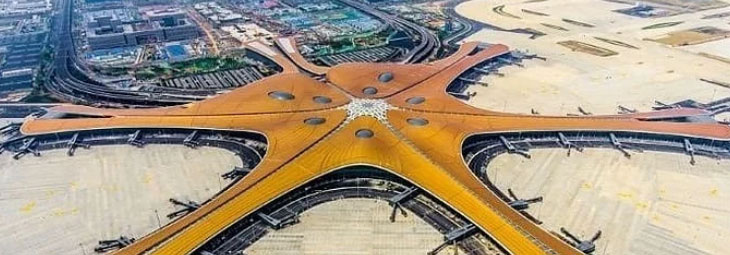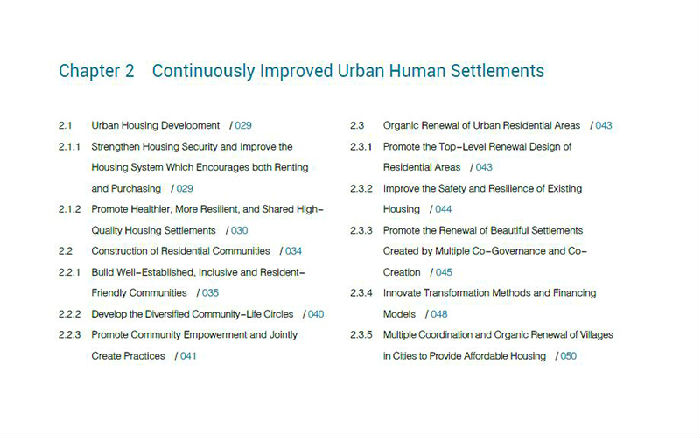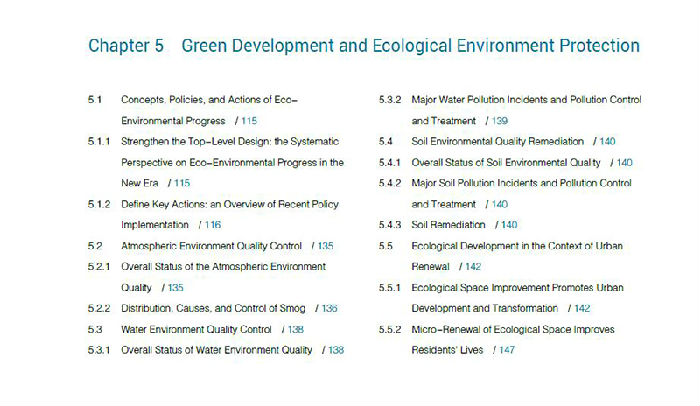

FOREWORD
Wang Guangtao
Vice President, CSC-IEAS Chairman, Environment Protection and Resources Conservation Committee of the 11th National People’s Congress Former Minister, Ministry of Construction,P.R.C.
The Chinese people embarked on an extraordinary journey from 2020 to 2021.
In the face of major changes in the world unseen in a century, China became the first in the world to effectively control the COVID-19 spread, and also the first to achieve positive economic growth among the world’s major economies. Year 2020 saw China’s GDP exceeding RMB one hundred trillion, the successful conclusion of the 13th Five-Year Plan. 98.99 million impoverished rural residents living under the current poverty line all lifted out of poverty. The formation of a new development pattern has accelerated, the high-quality development has been implemented in depth, and solid progress has been made in the concerted promotion of the “Belt and Road” initiative. The idea of building a community with a shared future for mankind has been widely recognized by the international community. A civilized, open and inclusive China is more vividly and clearly showcased to the whole world.
Since the launch of reform and opening up, China has experienced the largest and very rapid urbanization process in human history. China saw its permanent urban residents up from 172 million in 1978 to 902 million in 2020, with an average annual increase of 17.38 million; the urbanization rate rose from 17.92% to 63.89% during the same period, with an average annual growth rate of 1.09%; and after the continuous and concerted efforts of all ethnic groups, a total of 770 million impoverished rural residents were lifted out of poverty, accounting for more than 70% of the global population lifted out of poverty during the same period. The practice and exploration of China’s urbanization has paved a new path for the world’s urbanization process and offered an example of China’s urbanization to developing countries.
Today, China is unfolding a grand blueprint for a new journey of building a modern socialist country in an all-round way, and will enter a new stage of development in which more obvious substantive progress will be made targeted at the common prosperity of all the people.
In the Outline of the 14th Five-Year Plan (2021-2025) for National Economic and Social Development and Vision 2035 formulated by the Chinese government,it is proposed to adhere to the approach of a new China model urbanization, and to further promote the people-centered urbanization strategy, rely on city clusters and metropolitan areas to promote the coordinated and differentiated development of large, medium and small cities and small towns, so that cities, towns and rural villages will be built healthier, safer, and more livable, and become a space for the people
to live with high quality.
With the strong support of UN-HABITAT and various parties at both home and abroad, we have continued to compile the English and Chinese versions of The State of China’s Cities 2020/2021 with the
theme of “Sustainable Urbanization and High-quality Transformation”。
This book offers an international platform for systematically introducing the state of Chinese cities,promoting Chinese urban culture, and commenting on the developments of Chinese cities. The observations and practical cases of Chinese cities showcased in this book will offer the international community a channel to obtain a more objective and comprehensive understanding of China’s urban and rural development landscape, and jointly seek a better approach of harmony for the sustainable urbanization and high-quality transformation of the mode of development.
September 2021
ABSTRACT: China has Embarked on a New Journey
Shi Nan
Executive Vice President, Secretary-General, Professorate Senior Engineer, UPSC
2020 and 2021 mark two truly extraordinary years. The rampant spread of COVID-19 globally has made the restoration of health and safety the biggest challenge for all countries affected. Health and sustainable urban development are inseparable. During the fight against the COVID-19 pandmic, China has been fully engaged from planning, spatial governance, publicity and guidance,continuously explored effective models for building healthy cities, emphasized people’s health as the center and priority and adopted comprehensive economic,social, and policy measures to improve urban resilience.
The impact of the epidemic still continues, and China’s development has never halted.
Facing the arduous and formidable tasks of reform and development and the severe impact from the COVID-19 epidemic, China has adhered to focusing on epidemic prevention and control on the one hand and on social and economic development on the other hand, and achieved the successful conclusion of the 13th Five-Year Plan and presented the overall depiction of the 14th Five-Year Plan. China has achieved the great historic achievement of building a well-off society in an all-round way, and won the decisive victory in the battle against poverty. In 2021, China solemnly announced to the world that it had achieved the first Centenary Goal of building a moderately well-off society in all respects, and would start the new journey of building a modern socialist country in an all-round way.
Looking at the new journey from an economic perspective, China has put forward the overall goal of innovation-driven high-quality development to strengthen the “sustainable and inclusive economic growth”。 In the past two years, China has steadily resumed work and production, and achieved the V-shaped recovery of the economy under strict epidemic prevention and control, and became the only major economy in the world to achieve positive economic growth. China’s response to the epidemic has met the needs of the people and attracted the attention of the world. Sustainable economic development will remain the theme of China’s economic development in the future. At the same time, the establishment of a “dual circulation” development pattern in which the domestic economic cycle plays a leading role while the international economic cycle remains its extension and supplement, and the promotion of the high-quality transformation of the mode of economic development and an inclusive urban economy will become new targets. In response to the increasing multiple imbalances and inequalities caused by the epidemic and other factors, China will also promote the institutional establishment of a factor market in accordance with the principle that the market will play a better role under the guidance of the government, so as to ensure
that the factor prices are determined by the market, and factors flow in an autonomous and orderly manner and allocated in an efficient and fair way, and strive to resolve the new contradictions of unbalanced and inadequate development.
Looking at the new journey from the perspective of governance, China has taken steps on various slevels including national governance, social governance, urban and regional governance, urban and rural grassroots governance, and other levels to allow everyone to “equally share the opportunities and benefits brought about by urbanization”。 At the level of the central government, China has proposed to adhere to the people-centered development concept and the principle that development is for the people, by the people and with the people sharing in its fruits, further promote the citizenization of the agricultural population transfer, raise the level of equalization of basic public services, improve the quality of life, and allow everyone to share the fruits of the reform. At the local government level, China has proposed a grand vision of promoting common prosperity through high-quality development, including the significant expansion of middle-income groups, the significant reduction of the gap between urban and rural development and the gap in the living standards ofurban and rural residents, and the remarkable substantive progress in the overall development of people and the common prosperity of all people. In the past two years, China has been updating and optimizing the institutional mechanisms and practical operating methods
concerning such aspects as the management of mega-cities, urban-rural grassroots governance ranging from the modernization of governance capabilities and governance systems to the diversification of governance entities, the optimization of governance models and mechanisms, and the modernization of governance methods.
Looking at the new journey from the perspective of environment, China has made new arrangements for the main goals, overall requirements, and key tasks of eco-environmental progress and ecological environmental protection. China has attached great importance to tackling climate change. President Xi Jinping said at the the Leaders Summit on Climate that China will strive to peak carbon dioxide emissions before 2030 and achieve carbon neutrality before 2060, and take concrete actions to implement the Paris Agreement. This is a major strategic decision made by China based on her responsibility to promote the building of a community with a shared future for mankind and the internal requirements of achieving sustainable development. In the past two years,satisfactory ecological and environmental achievements have been displayed across China: the 9 binding indicators the phased targets and tasks of the pollution prevention and control battle stipulatedin the outline of the 13th Five-Year Plan have been successfully completed. The fight against air pollution, water pollution and soil pollution has achieved important results, ecological conservation and restoration have been continuously advanced, and positive progress has been made in tackling climate change. China has already exceeded the 2020 targets of her foreign commitments ahead of schedule.
Looking at the new journey from a cultural perspective, China has upheld the spirit of inclusiveness, promoted the exchange and mutual learning of civilizations and the creative transformation and innovative development of Chinese civilization. China is committed to facilitating the harmonious development of Chinese civilization with the civilizations of other countries in the world, and providing correct spiritual guidance and storng spiritual motivation for mankind. At the national level, China has implemented the projects on promotion and development of traditional Chinese culture in recent years, adhered to the Chinese cultural perspectives, crried forward the Chinese cultural heritage; never forgotten the authentic Chinhinese cultural heritgage, and absorbed the essence of externral cultures with the future-oriented perspective; absorbed the Chinese wisdom, promoted the Chinese spirit, and spread Chinese values to continually enhance the vitality and influence of excellent traditional Chinese culture; and at the level of cities and neighborhoods, China has issued the Opinions on Strengthening the Protection and Inheritance of Historical Culture in Urban and Rural Development, and put forward the specific requirements of the systematic protection, utilization, and inheritance of the historical culture in urban and rural development, carry forward the historical context and promote the high-quality development of urban and rural development. Relevant materials and cases of all contents mentioned above can be found in this book. They are the epitome of the development of many cities in China in the past two years and prudently chosen and showcased here to show the changes of China, the world, the era and the history instead of the changes of the moment and the cities alone. China is willing to join hands with all countries, international organizations and institutions to jointly advance the progress of human society.







2020 2021 THE STATE OF CHINA’S CITIES.pdf